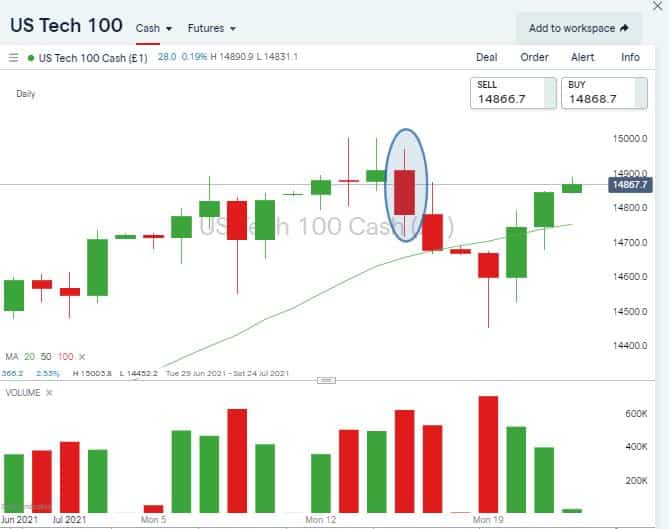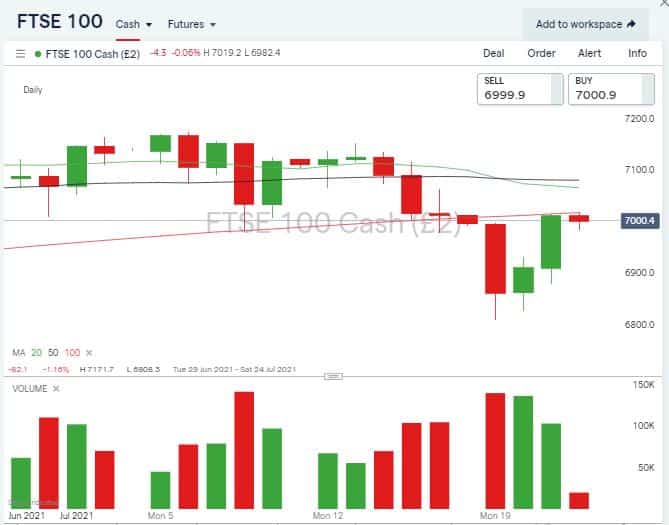The recent asset price crash and subsequent recovery over the last week could lead to some complacency creeping into trade selection. That could be a costly mistake. At a superficial level, it looks like markets just went over a reasonably standard-issue bump in the road. However, the different forces in play mean that it’s easy to be torn over deciding if that is the case.
The Kangaroo Market – How did we get here?
First up is the price action. Focussing on major global equity indices, there’s a difference in chart patterns between the ‘regular’ indices and those weighted more towards big tech. The Nasdaq and S&P 500 had more gradual price falls and recoveries than the broader-based indices such as the Dow Jones Industrial Average. The Nasdaq started its mini correction on Thursday the 15th of July when, at one point, it was down 1.71% on the day. That same Thursday, the DJIA was up 0.23%. An interesting pricing anomaly that reflects the extra volatility and uncertainty creeping into the markets.
On Friday morning, the DJIA started positively and was up 0.43% intraday before noticing it had missed the sign to re-evaluate. The Dow then caught up with the playbook and posted losses of 3.86% between Friday’s high and Monday’s low: a hefty fall in just two trading sessions and one which saw the DJIA crash through the 20, 50 and 100 daily SMAs. The Nasdaq, in contrast, breached only the 20 SMA and continues to trade above them all.
Source: IG
Cross-referencing to the FTSE 100, which is packed full of out of favour, carbon-energy and banking stocks is useful. Despite investors’ relief that prices rebounded on Tuesday, that index has failed to get back above any of the major moving averages.
Source: IG
Over the last seven days, the move has been a shift from cyclical stocks into the perceived security of Covid-resistant big tech names. The shadow of Covid still hangs over the markets.
This rotation from cyclical to tech stocks is a defensive move and a sign of potential trouble ahead. Buying into Amazon and Apple is no longer the actions of speculative day traders, more the considered allocation by institutional investment funds.
The Nasdaq ended lower on Thursday the 16th thanks to investors in FAANG stocks and other big tech names being spooked by US weekly jobless claims data, increasing the chances of an inflationary spike and with-it higher interest rates. Those risks remain.
Stagflation, one of the worst-case scenarios for the global economy, is coming up in conversations a lot more. Speaking with CNBC, Aneta Markowska, CFO of Jefferies, went so far as to say that “The market is trading on the stagflation theme … There’s the idea that these price increases are going to cause demand destruction, cause a policy mistake and ultimately that slows growth.”
The summer months aren’t typically associated with long-term trends undergoing an overhaul. Prices are supposed to drift until Wall Street’s rainmakers make it back from the beach. Things have been topsy-turvy for 18 months, and an unseasonal major realignment appears to be taking place.
If you want to know more about this topic, please contact us at [email protected]



 Between 74-89% of CFD traders lose
Between 74-89% of CFD traders lose  Your capital is at risk
Your capital is at risk  Your capital is at risk
Your capital is at risk  Your capital is at risk
Your capital is at risk